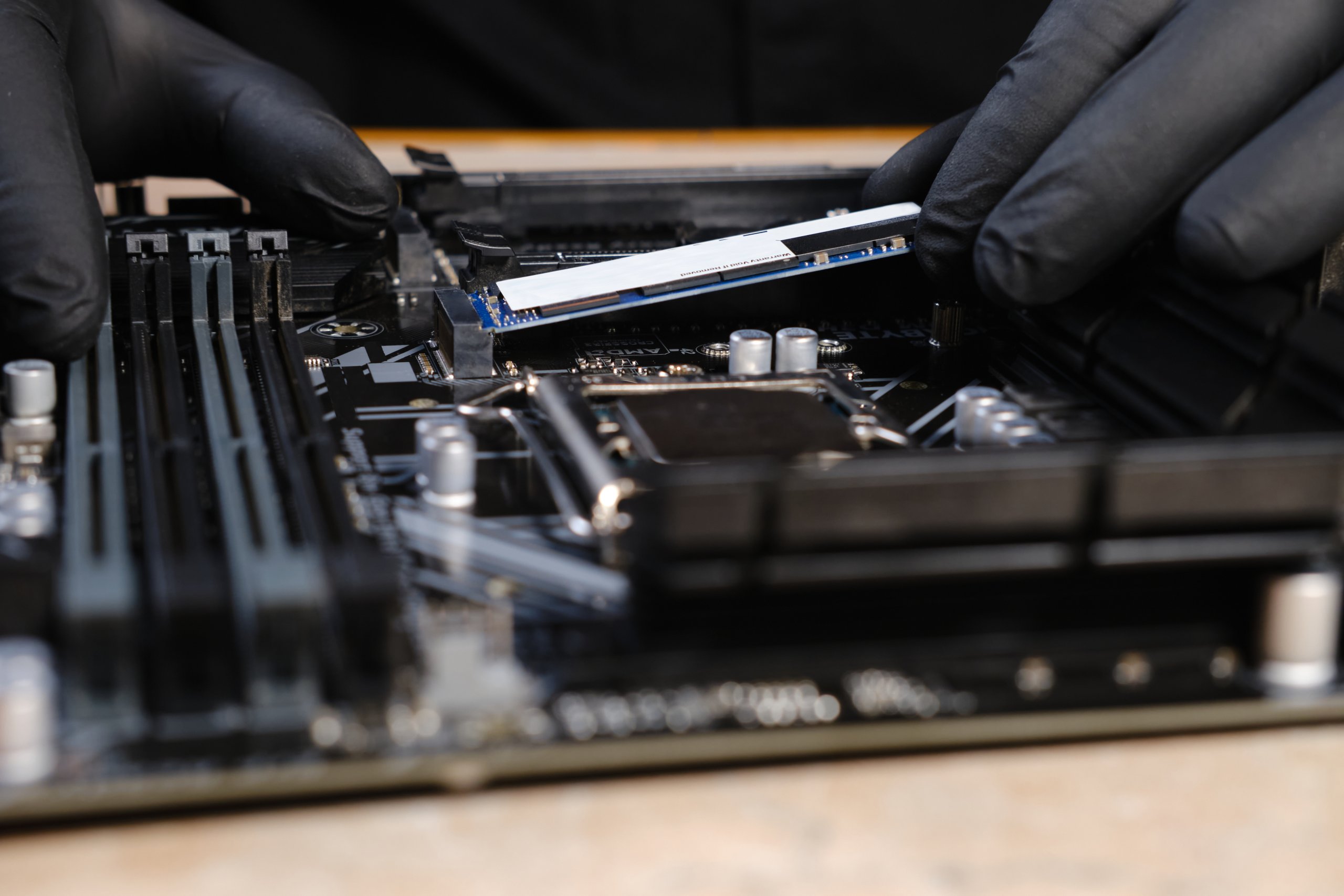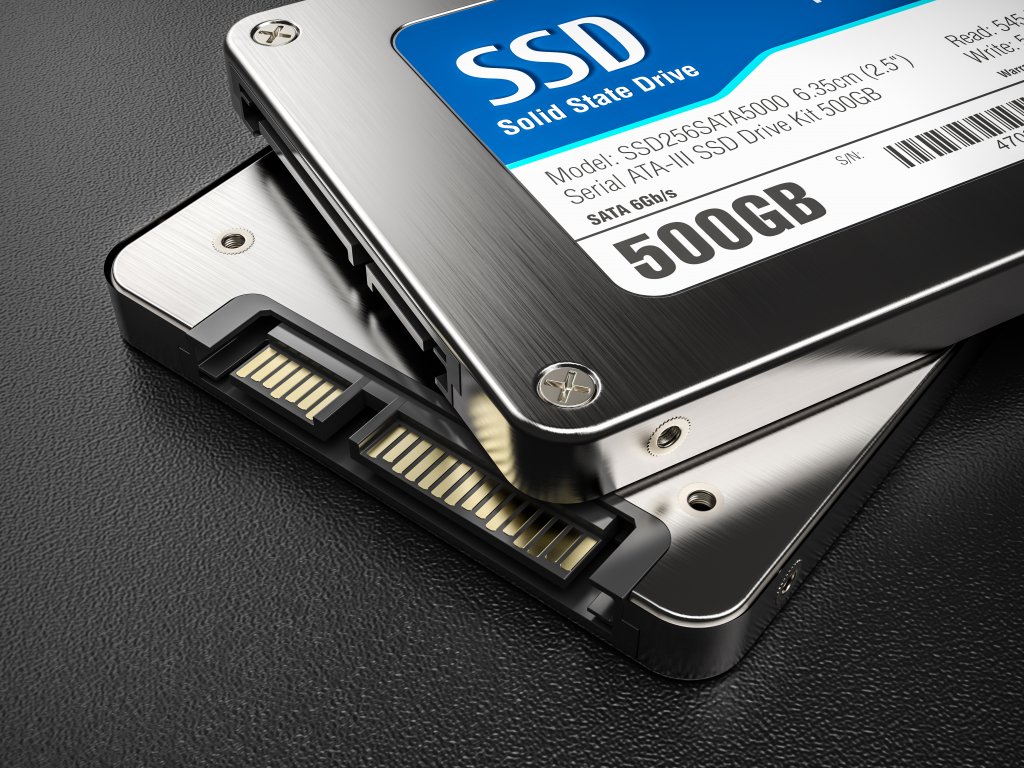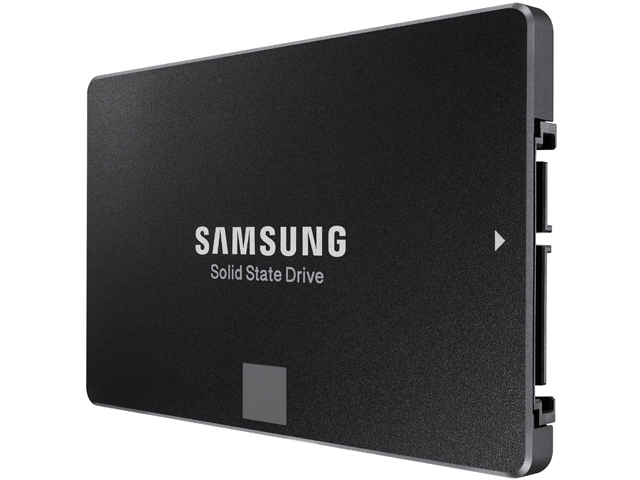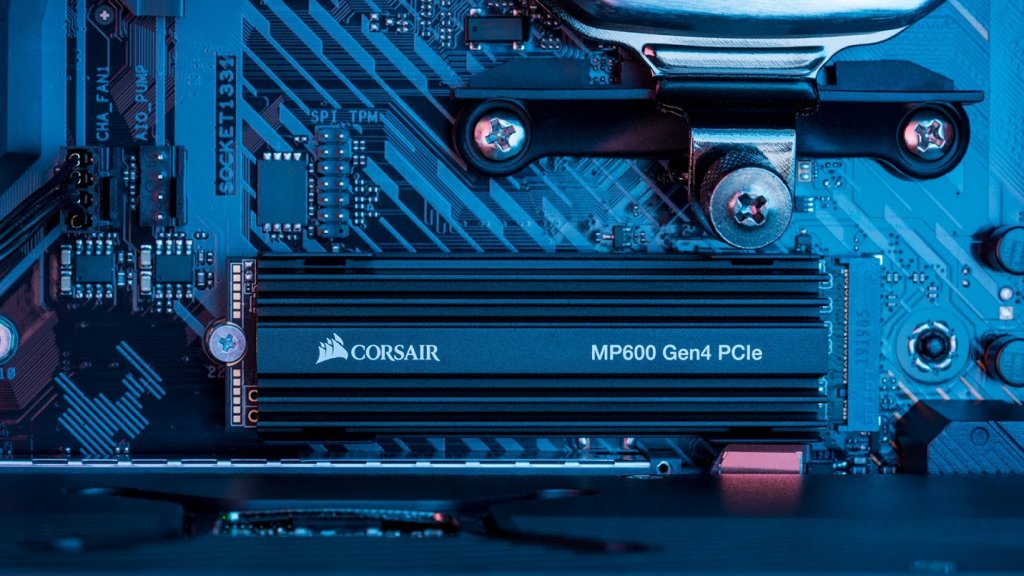
Buying storage for your PC can be a challenging proposition. First, there’s the question of how much storage you need. Then, there’s the question of which kind of storage is best for your needs. Even narrowing down between the two choices, a spinning hard disk drive (HDD) or solid-state drive (SSD), requires careful consideration.
In fact, the title of this article makes a major assumption, that is, that you’ll want to buy an SSD for your PC build. Why not an HDD? We provide an extensive guide on deciding between an HDD and an SSD that answers the question in detail. For our purposes here, suffice it to say that SSDs are faster and more reliable than HDDs, but they’re also more expensive.
You’ll want an SSD for your PC, that’s the one thing we can say for certain. But there are a number of factors that you’ll want to consider before making your final decision.
SSDs are less expensive than ever
 The great thing is that SSDs are less expensive than ever. There was a time when SSDs were considerably more expensive than HDDs, so much so that they were only considered for the most high-performance applications. It may be a surprise to many, but SSDs have been around since the late 1970s, used in mainframe and minicomputers and costing $400,000 for 45MB (yes, megabytes) of storage.
The great thing is that SSDs are less expensive than ever. There was a time when SSDs were considerably more expensive than HDDs, so much so that they were only considered for the most high-performance applications. It may be a surprise to many, but SSDs have been around since the late 1970s, used in mainframe and minicomputers and costing $400,000 for 45MB (yes, megabytes) of storage.
In 2003, the first terabyte SSD was sold, costing $2 million. By 2005, companies like Samsung were investing heavily in the technology, and in 2006 the first SSDs for laptops became available. According to one source, SSDs cost $40 per GB in 2008, and by 2012 the cost had dropped to $1 per GB by 2012, compared to $0.054 per GB for HDDs.
SSD prices continued to fall, and by 2018 the price gap compared to HDDs had fallen dramatically. In 2018, an SSD cost an average of $0.25 to $0.27 per GB compared to an HDD at an average of $0.2 to $0.03 per GB. Today, in 2022, a high-performance HDD, the SATA 4TB Western Digital Black, costs $145, compared to Western Digital’s Black SN750 4TB NVMe M.2 (more on that later) SSD that costs $750.
The SSD is clearly more expensive, but in this example the cost per GB is $0.04 per GB for the HDD and $.19 per GB for the SSD. This is an extreme example – most people don’t need 4TB of SSD storage. Looking at the 1TB size, the Western Digital Black 1TB HDD costs $45, or $0.045 per GB, versus the Western Digital Black NVMe 1TB SSD at $150, or $.15 per GB.
So, while SSDs remain more expensive than HDDs, the cost difference doesn’t contribute that much to the cost of building a new PC. And, there’s a strategy for mixing SSDs and HDDs that can make a great deal of sense.
Using both SSDs and HDDs
There are two primary purposes for a PC storage device. There’s a place to install the operating system and applications, and there’s a place to store data. PC performance is most impacted by the speed of storage devices when booting the PC, paging memory to disk when RAM fills up, opening applications, and other system-level tasks.
A good strategy, then, is to use an SSD as a system drive and an HDD as a data drive. This is also a more economical approach, leveraging the low cost per GB of an HDD for large files like images and video. The Western Digital Black NVMe 1TB SSD mentioned above would be a great system drive, providing plenty of fast storage for the operating system and applications, and then the Western Digital Black 4TB HDD would provide a fast HDD for plenty of data storage.
Saving and accessing data also can impact a PC’s performance, especially in gaming where loading levels, textures, and other gaming data can involve massive files, but speed is typically less important here. It comes down to a price to performance calculation. Certainly, if you can afford a larger SSD for storing data, then you’ll get the ultimate in storage performance.
Types of SSDs
Since we’re focusing exclusively on internal PC storage in this article, we’re talking about four different SSD form factors. Which of these makes sense for you depends entirely on your budget and what kind of SSDs are supported by the motherboard in your PC.
 2.5” drives
2.5” drives
The 2.5” drive form factor looks like a smaller HDD, only it’s filled with silicone instead of spinning disks. It connects via the SATA (Serial ATA) connector, along with a separate power supply, and it installs into a storage slot in the PC case. You’ll need an adapter to fit the 2.5” drive into the larger 3.5” drive bay.
We’re at SATA III, which provides a 600 megabytes per second (MBps) data transfer speed. SATA III HDDs also support the same theoretical speed, but of course they cannot serve up data as quickly as SSDs.
mSATA
The mSATA standard uses a slot in the motherboard that a smaller mSATA SSD connects to. mSATA uses the same connection as SATA III and provides the same 600 MBps transfer speed. mSATA connections aren’t as common in newer motherboards, and so if you choose this form factor make sure it’s supported on your PC’s motherboard.
 PCIe
PCIe
PCIe, or Peripheral Component Interconnect Express, is a high-speed expansion bus standard used for several different PC components. GPUs and SSDs are just two of the components that can utilize PCIe slots. PCIe 4.0 x4 (the x4 refers to four circuit lanes, meaning the slot can transfer four bits per cycle) slots can transfer up to 8 gigabytes per second (GBps), making them significantly faster than SATA connections. PCIe 5.0 is on its way, which will offer up to 16GBps in the x4 configuration.
 M.2
M.2
M.2 slots are the latest connection built into modern motherboards and can support PCIe 4.0, SATA III, and USB 3.0 interfaces. The fastest SSDs use M.2 NVMe (Non-Volatile Memory Express) connections, supporting up to four PCIe lanes and a transfer rate of up to 8.0 GBps. That’s more than ten times as fast as SATA III, along with NVMe better supporting the overall data transfer rates that SSDs can achieve.
M.2 has evolved since it was first released, with the M.2 2242, M.2 2260, and the most recent M.2 2280 standards. When choosing an M.2 SSD, you need to be careful to select the right connection for your motherboard.
NAND types
The last consideration in what kind of SSD to choose involves the type of NAND flash memory that’s used in an SSD. There are several different types of NAND in terms of how data Is stored on the flash chips, of which four are the most important.
- Single-Level Cell (SLC): stores one bit per cell, the fastest, most durable, and most expensive.
- Multiple-Level Cell (MLC): stores two bits per cell, the second fastest, moderately endurable, and less expensive.
- Triple-Level Cell (TLC): stores three bits per cell, the slowest, least durable, and least expensive.
- 3D NAND (also called V NAND): stores data vertically, provides superior data density and performance compared to 2D NAND.
Most consumer-level SSDs use MLC NAND, while most enterprise SSDs use SLC NAND. However, you can find consumer SSDs with SLC NAND, and those will provide the best performance. SSDs using TLC NAND will be less expensive and they’ll also be slower than the other two types.
Top SSD Brands & Deals on Newegg
- See Best Sellers in Internal SSDs
- See Top Deals in Internal SSDs
- See Lowest Prices in Internal SSDs
- Samsung
- Crucial
- Intel
- Western Digital
- Kingston
- Team Group
- Seagate
- SanDisk
How long will my SSD last?
That’s a challenging question, and we delved into the details in our article about how long HDDs and SSDs last. Simply put, SSDs have a limited lifespan that’s longer than HDDs but not forever, measured in terms of Terabytes Written (TBW).
The typical consumer SSD has a TBW of 600, but some more robust drives have higher TBW ratings. The Corsair Force MP600 2TB SSD, for example, has a TBW rating of 3,600. The challenge is that not all manufacturers list the TBW rating, but instead use their own measurement. The Western Digital Black SSD referred to above lists a mean time to failure (MTTF) of 1.75M hours, for example.
Which SSD should I purchase?
How large an SSD you purchase will be determined by your storage strategy. If you decide to install an SSD for your system files and an HDD for your data, then you don’t need to purchase as large (or expensive) an SSD. A 512GB SSD would likely be plenty, and then you can choose an HDD based on how much data you expect to store.
If your motherboard supports it, then you’ll want to select an M.2 NVMe 2280 SSD. That will provide the fastest performance. If you’re upgrading an older PC, then you might be stuck with a SATA III SSD.
Finally, if you can locate an SSD with 3D or SLC NAND in your price range, then you’ll want to grab it. This, too, will help optimize your PCs performance. You’ll want to look for MLC NAND at a minimum, and avoid TLC NAND unless your budget is very tight.
Once you’ve chosen your SSD form factor and size, then you’ll want to shop Newegg’s SSD section for the best combination of features.
Choosing an SSD seems daunting, but don’t fret too much
It’s true that there are many different factors to consider in choosing an SSD. However, many of these distinctions won’t be noticed by the typical PC user. Even gamers will benefit from an inexpensive SSD compared to an HDD, with more expensive SSDs offering only incremental increases in performance.
Therefore, choose an SSD that fits your budget, but don’t worry too much about the nuances. Unless you’re building a PC for mission-critical applications, you’ll get solid performance and a long enough lifespan from any average-priced SSD.
